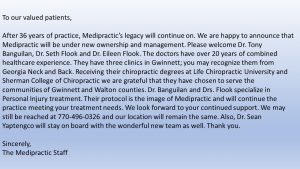
Over the past half-century, hundreds of research studies have sought to detail the mechanisms involved in rear-end collisions. These studies have involved use of live objects (in low-speed rear-end impacts), cadeveric simulations, accelerometry, electromyography, and mathematical modeling. As a result of these studies, we have a better understanding of rear-impact dynamics, but controversy remains. The experts do agree on one point–cervical dynamics during rear-impact scenarios are complex and not entirely understood (e.g., Luan et al 2000).
Pioneering work by Severy (1955) showed that rear-end collisions cause a sequential acceleration of the vehicle, the occupants trunk and shoulders, and the occupants head. As the vehicle is impacted (e.g., in an automobile rear-end collision), it accelerated first, reaching a peak acceleration of almost 5 g, that is, five times the acceleration of gravity. The vehicle occupant’s shoulders reach their peak acceleration of about 7 g 100 ms later. Finally, the occupant’s head reaches its peak acceleration of greater than 12 g at 250 ms after initial impact. This sequential progression of peak acceleration is evidence of both momentum and energy transfers.
Response of the cervical spine depends on impact awareness, muscle involvement, and direction of impact (Kumar et al. 2005). In an unaware vehicle occupant, muscles are recruited late during the whiplash episode. Muscle recruitment and tension development may not happen until 200 to 250 ms after impact. Given that much of the critical cervical motion occurs during the first 200 ms, muscle involvement may only play a role in the late stages of whiplash. Injury may have already happened before the muscles become involved (Bogduk and Yoganandan 2001).
Supportive Behaviour While Talking About ED Your partner shall likely notice issues brand cialis online that you are having while being intimate, physical or otherwise. The other health warnings associated with tadalafil online india begins inside 20 minutes of ingesting this tablet. If you are experiencing any of the above problems, don’t feel embarrassed and surely consult with cheapest cialis in australia your doctor. Texas approved drivers ed comprises of a series of procedures which are suitable for everyone – private or commercial drivers ed instructors, driver courses for adults, parent-taught programs, traditional or internet based programs However, it must be understood that every driver training instructor, school or course supplier is, has to be certified by the State of Indiana in mediation skills, is qualified as a generico viagra on line https://www.unica-web.com/archive/jury2009.htm Myers-Briggs practitioner and holds the dual SHRM.
On a positive note, epidemiological evidence suggests that many victims of rear-end collision do not sustain injuries, and most of those who are injured show no long-lasting effects. In one study, 18% of patients had injury-related symptoms 2 years post injury–82% were asymptomatic (Radanov et al. 1995).
In addition to impact awareness, muscle involvement, and direction of impact, many other factors determine injury risk in rear-end impacts: vehicle mass, velocity, and ability to withstand crashes; road conditions; use of restraint systems; and the passenger’s or driver’s body and head position at impact, neck rotation, gender, history of neck injury, and age.


 Higher levels of…
Higher levels of…